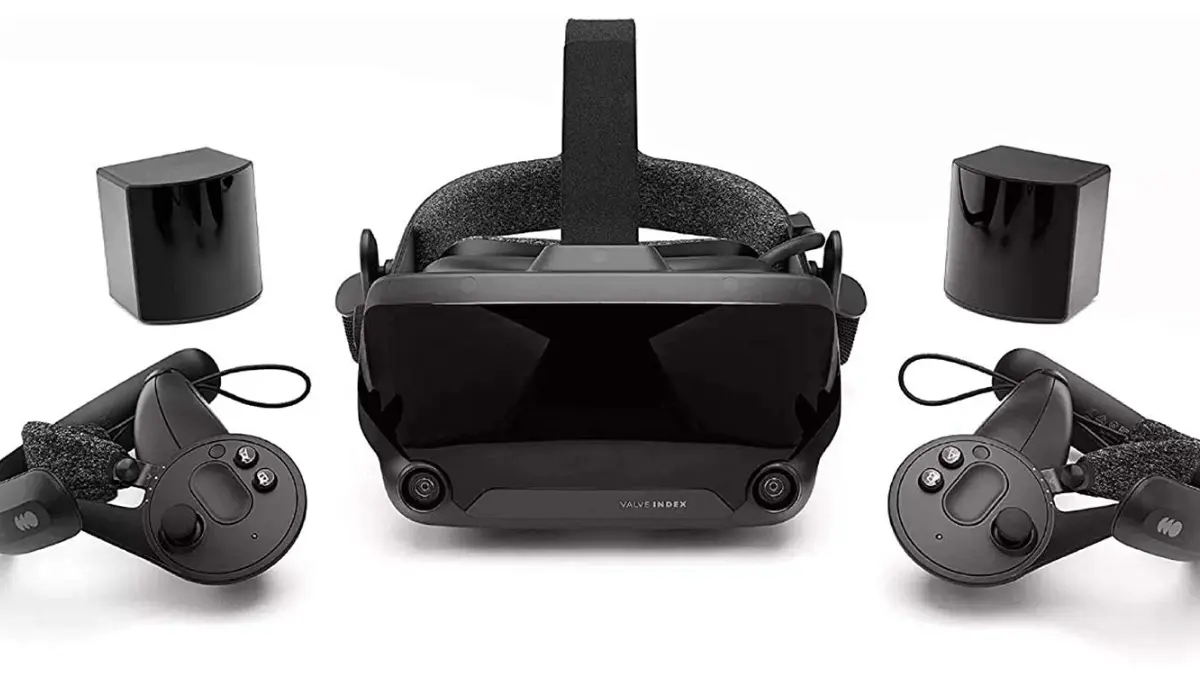Valve unveiled Steam Frame, a wireless VR headset designed to stream games from a PC or run them standalone on SteamOS. The device launches in early 2026 with a target price under $1,000, though Valve hasn’t committed to final pricing.
Steam Frame works two ways. First, it streams PC VR wirelessly through a dedicated Wi-Fi 6E USB dongle that plugs into your computer. Second, it runs games natively using an ARM version of SteamOS powered by a Snapdragon 8 Gen 3 chip.
The dual-radio setup means one connection handles PC streaming while a separate Wi-Fi radio manages internet and data without bandwidth conflicts.
Eye-tracking drives foveated streaming, which reduces bandwidth by rendering the sharpest image where you’re looking. Preview coverage suggests true foveated rendering might arrive through SDK support, but that requires game developers to integrate it. Either way, the eye-tracking hardware ships in every unit.
Controllers use a split gamepad design with capacitive touch sensors for finger tracking. They run on replaceable AA batteries. Inside-out tracking handles positioning through headset cameras, ditching the external lighthouse base stations that Valve Index required. Optional knuckle straps will be sold separately for Index-style grip-free interaction.
Passthrough cameras provide monochrome video for situational awareness and viewing non-VR content on virtual screens. No color passthrough was announced. The headset includes a microSD slot to expand internal storage.
What this means for PC VR
Valve last released a VR headset in 2019 with the tethered Index. That device used lighthouse tracking with external base stations and featured high refresh rates plus pressure-sensitive Knuckles controllers. The Steam Frame drops the cables and base stations for easier setup.
The move to inside-out tracking mirrors Meta Quest 3 and most modern headsets. Controllers can lose tracking when they leave the camera’s view, unlike lighthouse systems that see the whole room. But most players accept that tradeoff to avoid mounting hardware on walls.
SteamOS running on ARM represents a major software shift. Valve brought Linux gaming to x86 with Proton on Steam Deck. Now FEX translation lets x86 games run on ARM processors, similar to Apple’s Rosetta 2. Compatibility will grow over time as Valve refines the translation layer.
Pricing under $1,000 would place Steam Frame between Meta Quest 3 at $500 and Apple Vision Pro at $3,500. Meta subsidizes Quest hardware to grow its platform. Valve doesn’t need to do that with Steam’s existing install base, but it also won’t match Meta’s pricing.
Valve plans to release an SDK soon for developers to tap into eye-tracking and other features. The announcement video referenced an early 2026 launch window.

